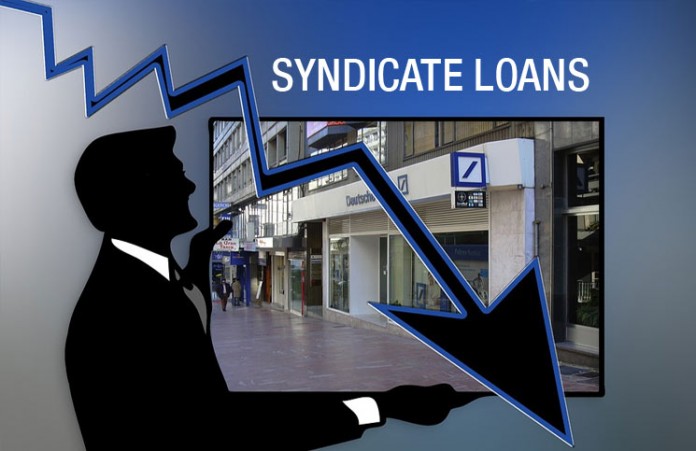In this blog post, Harmish H Patel, a second-year student at Hidayatullah National Law University and pursuing a Diploma in Entrepreneurship Administration and Business Laws from NUJS, Kolkata, analyses and discusses syndicate loans.
Introduction
Syndicate loan is a type of loan that is provided by a group of lenders collectively to a single borrower and is structured using similar terms and conditions, documentation, etc. administered by several commercial banks or by a common agent. Lenders collectively are known as the syndicate. Generally, the banks to the government bodies or corporation due to the huge loan amount provide this type of loan or amount lent is huge. Nowadays several investors like a hedge fund, mutual fund, insurance companies, etc. are also providing syndicate loans.
Parties to the Syndicate Loan
- The Lender: Generally, the lender is an entity, which forms a syndicate. This is in the form of banking institutions, which lends out money for the required purposes.
- The Borrower: The entity, which is in need of loan and initiates the process or initiator of the whole process, is a borrower.

- Lead Merchant Banker: The Lead Merchant Banker is a co-lender who constitutes a group of banks who have contributed a share towards percentage loans. Once this institution has contributed the share, co–founder’s agreement is signed.
- Agent: The Agent acts as a link between the lender and the borrower. He is the one who takes cares of the day-to-day operations or administration of the loan facility. Agent acts as the agent of lending parties or lenders and not borrowers.
There are also other parties, which consist of security trustee, co-arranger, decision-making panel, etc., but important parties are a lender, borrower and agent.
Types Of Syndicate Loans
There are mainly three types of Syndicate loans. These are:
- Underwritten Deal
- Best Effort Syndication
- Club Deal
Underwritten Deal
Underwritten deal: An underwritten deal is a deal in which the arrangers syndicate the loan after guaranteeing the entire commitment. They are forced to draw in the difference, in case the arrangers cannot fully subscribe the loan, which they may later try to sell to investors. This is not difficult if market situations or credit’s fundamentals, improve. The arranger may be forced to sell at a discount or can even take a loss on the paper, if not. Or the arranger may just be left above its desired hold level of the credit. The question arises is why do arrangers underwrite loans? Providing an underwritten loan can be a competitive tool to win mandates. Secondly, the fees required for underwritten loan is high because the agent is on the hook if potential lenders blunder. Nowadays, flex-language is common, once underwriting a deal carried minimum risk it when the pricing was decided in stone prior to syndication.
There are several reasons for which arrangers underwrite loans. As said earlier, offering an underwritten loan can be a precious tool to win mandates. Underwritten loans usually require high fees because the agent is on the hook if potential lenders baulk.
The underwritten deal is one of the most widely available types of syndicated loans in Europe. Under this arrangement, the lead agent or underwriter guarantees and syndicates the entire loan. If the loan has not been fully subscribed, the lead agent can have the option to absorb the undersubscribed portion. Then, if the condition of the market is bullish, the same lead agent can sell to other investors the undersubscribed part of the loan that it has absorbed. However, if the market situation is bearish, the lead arranger may be compelled to sell any undersubscribed portion at a discount or simply consider the whole thing as a loss.
There are numerous reasons why a bank under certain circumstances may decide an underwriter. Due to this type of loan, a financial institution seems or looks more competitive. Next, a syndicated debt could mean huge surplus for the bank because the risks involved in this type of loan can be reached to higher service fees. Lastly, underwritten deals now have fluctuated interest rates. Thus the risks are no longer as high as debts with fixed rates.
Best Efforts Syndication
A best-efforts syndication is a syndicated loan in which the arranger group is assumed to underwrite less than or equal to the entire sum of the loan, leaving the credit to the vicissitudes of the market. If the loan is undersubscribed, the credit may not close—or may need significant adjustments to its interest rate or credit rating to clear the market. Generally, the risk takers and not normal investors used best efforts syndication. Since the late 1990s, however, the rapid acceptance of market-flex language has made best efforts loans the rule even for investment-grade transactions.
Club Deal
A “club deal” is a smaller loan (usually $25 million to $100 million, but as high as $150 million) that is been provided or lent to a group of relationship lenders. The arranger is generally a first among equals, and each lender gets a full cut, or nearly a full cut, of the fees. A club deal, in finance, is related to a leveraged buyout or other private equity investment that involves two or more private equity firms. It can also be treated as a consortium or syndicated investment.
In a club deal, the investor group of private equity firms pools its assets together and makes the acquisition collectively. The practice has allowed private equity to purchase larger and more expensive companies that each firm could acquire through its own private equity funds. By syndicating the equity ownership across a group of investment firms, each firm reduces its concentration and is able to maintain the diversification of its portfolio of investments.
Fees for Syndicated Loans
Generally, the cost of the loan is been determined on the basis of interest rates that are been charged by the bank. Bank levies various fees and charges incurred in providing credit facilities. It also includes the cost of the loan for a borrower. There are also other categories of charges, which the bank can take in the case of a syndicated loan.
 When the loan is been taken from the foreign bank, it must be noted by these banks that the transactions taken should be according to the ECB regulations, which place a cap on the total cost of the loan. This cap is been treated or named as “all-in-cost” ceiling
When the loan is been taken from the foreign bank, it must be noted by these banks that the transactions taken should be according to the ECB regulations, which place a cap on the total cost of the loan. This cap is been treated or named as “all-in-cost” ceiling
Different fees that are charged are as follows:
- Arrangement Fee- It is the fee, which is paid to the bank for arranging syndication, which covers syndicating, structuring and negotiating the documentation.
- Underwriting Fee- It is the fee collected or accumulated by the underwriters for performing their services, which are known as underwriting services.
- Participation Fee- It is the fee paid to the bank for joining the process of syndication, and it is paid according to the part or commitment of loan given by the bank.
Types Of Loan Facilities Provided By Banks
- Term Loan– It is a loan taken from a bank for a specific amount that has a specified repayment schedule and a floating interest rate. Term loans almost always have the period of 10 years. Repayment in this system can be made at once at the end of the facility or in instalments. Once the borrower is paid a term loan back, it cannot be withdrawn.
- Revolving Loan– It is the loan in which the borrower decides how often they want to withdraw and also decides the time intervals. The difference between a term loan and the revolving loan is that this facility allows the borrower to withdraw, re-pay or drawdown the loan during the term of its facility. If a revolving loan intends to refinance another revolving loan and withdrawn by the same borrower in the same currency which matures on the same date as the drawing of the second revolving loan, is known as a “rollover loan”.

- Evergreen facility– A loan that can be extended up to or after pre-set periods. This loan facility can be renewed and increased for 5 years.
- Backstopfacility– This loan is designed to be withdrawn only as a last resort. For example, institutions like when a corporation is on the verge of liquidation. It works as a backup when other funding sources have failed. There is also a swing line facility, which gives the borrowers the “same day money.”
- General facility– Syndicated loan agreements can either be a term facility or may be the revolving facility or they may contain merger or a combination of both or several of each type.
Factors on which interest rate charged by the banks on Syndicated Loans
Interest Rate charged by the banks on Syndicated Loans depends on these factors:
- Depends on upon the involvement Of Risk- Whether the borrower is PSU(Public Sector Undertaking), sovereign entity, Public company, Joint Venture or Private equity.
- Depends on upon the industry and activity of the company.
- Depends on upon the credit rating of the country on an international loan.
- Depends on upon the credit rating of borrower or group.
- Depends on upon the average lifespan of the loan.
- Depends on upon the repayment been made under the “Bullet Down Payment.”
Thus, these are the factors on which the on which the interest rate charged by the banks on syndication loans is depended.
















Certainly a nice article on nitty gritty of syndication of business loan . But, as a lawyer, one would like to know the scope of work that is in store in this segment . Besides, from a plain reading it seemed that the author has focussed on business funding on a global scenario . One needs to know .whether in domestic context, such arrangements are possible amongst Nationalised banks.